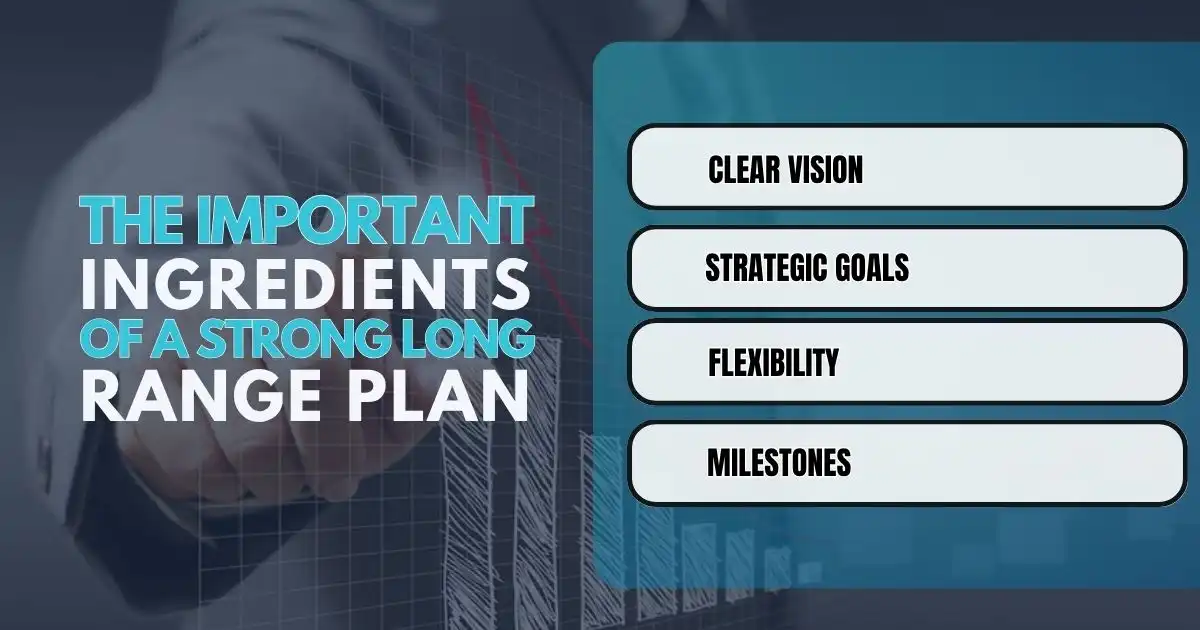When it comes to building a successful future—either for a business, a team, or yourself—thinking ahead is not just helpful; it’s essential. That’s where long range planning comes in. It’s more than setting goals. It’s about creating a clear roadmap to get from where you are now to where you want to be 5, 10, or even 20 years down the line.
From global companies mapping out expansion strategies to small businesses plotting a product pipeline and even individuals planning their career or financial future, long—range planning is the invisible force behind steady, meaningful growth.
But what exactly is long range planning? How does it work? And how can it help you grow?
What is Long Range Planning?

Long range planning is the process of setting long-term goals and defining the strategies needed to achieve them. It’s not about what you’ll do next month—it’s about where you’re headed over the next several years.
This kind of planning doesn’t live in daily to-do lists or next quarter’s sales goals. It lives in vision boards, strategic maps, and big-picture thinking. It helps answer questions like:
- What will our business look like in a decade?
- Where should I be financially by age 40?
- How do we prepare for industry changes five years from now?
And while it may sound like something only executives or big businesses do, long range planning is useful for everyone—startups, nonprofits, freelancers, and even students.
Why is Long Range Planning So Important?

Think of it this way: would you set out on a cross-country trip without a map or GPS? Probably not. Long range planning is your GPS for success. It helps you stay on course, avoid dead ends, and adapt to detours along the way.
Here’s what it gives you:
- Direction – It’s easier to move forward when you know exactly where you’re headed. Long range plans give you a sense of purpose and guide your short-term decisions.
- Clarity – It makes decision-making faster and clearer. If an opportunity doesn’t align with your long-term vision, it’s easier to say no.
- Confidence – When you have a plan, you feel more prepared. It helps reduce anxiety about the future because you’ve already thought it through.
What Does Long Range Planning Look Like in Action?

Let’s take a look at how long range planning plays out in real life.
For Businesses
A tech startup wants to become a leader in AI software. Its long range plan includes investing in research, hiring experts, expanding globally, and launching a flagship product in five years. That vision drives every decision—from hiring to budgeting.
For Individuals
A high school student wants to become a veterinarian. Her long range plan might include getting top grades, applying for scholarships, going to vet school, and gaining experience through internships. She knows where she’s going—and that helps her stay focused.
The Important Ingredients of a Strong Long Range Plan

Long range planning isn’t about guessing the future—it’s about preparing for it. Here are the main components:
- Clear Vision – What do you want to achieve in the long run? Be specific.
- Strategic Goals – Break the vision into smaller goals with realistic timelines.
- Flexibility – Plans may change, and that’s okay. Good long-term plans leave room to pivot.
- Milestones – These are the checkpoints along your journey. They keep you motivated and show progress.
How Long Range Planning Drives Growth
Long range planning isn’t just about forecasting—it’s about setting a clear direction for sustainable growth. When you know where you’re headed, it becomes easier to make decisions that align with your vision and drive meaningful progress.
- Helps You Stay Focused – It reduces distractions and helps you prioritize what matters.
- Encourages Smart Use of Resources – You’re more likely to use time, money, and energy wisely when there’s a plan behind it.
- Builds Resilience – A well-planned path makes it easier to handle setbacks, because you always know your “why.”
- Inspires Action – When you see the future clearly, you’re more motivated to take the daily steps to get there.
The Real Power of Planning
Plans don’t make headlines—but their impact is undeniable. Behind every thriving company, successful career, and resilient organization is a long range plan quietly shaping the future. These plans don’t just map out goals—they guide investments, inspire innovation, and turn vision into action.
While trends shift and markets fluctuate, those who plan often rise above the noise. They navigate uncertainty not with guesswork, but with preparation. And in a world that rewards speed, long range thinkers play the long game—and win.
But here’s the question: in the rush for immediate results, are we losing sight of long-term value? Are we investing enough time in the plans that build real, lasting growth?
Because the true cost of not planning isn’t just missed opportunities—it’s wasted potential.
The future will come, if you’re ready or not. The only question is: will you be prepared to lead it, or forced to chase it?
FAQs
How does strategic planning differ from daily business planning?
Strategic planning focuses on long-term direction and major objectives, while daily business planning handles short-term tasks and operations. Both are essential, but strategic planning ensures your daily efforts align with future goals.
Why are long-term goals important in a growth strategy?
Long-term goals give you a clear vision of where you’re headed, forming the backbone of a strong growth strategy. They help you stay focused and make smarter decisions over time.
How does future planning help with business success?
Future planning prepares you for upcoming challenges and opportunities, helping your business stay ahead of the curve. It’s a key part of sustainable business planning.
What are the first steps in the planning process and goal setting?
The planning process starts with identifying your vision, followed by goal setting to break it into achievable steps. This foundation supports all future strategic and vision planning efforts.
